Small doesn’t have to mean sacrificial. Your compact living space can become the most inviting room in your home with the right approach. These designer-tested strategies will help you create a cozy small living room that feels spacious, functional, and utterly charming.
Whether you’re working with 200 square feet or just dealing with an awkwardly shaped space, the secrets lie in understanding how to manipulate light, color, and furniture placement. I’ve gathered insights from interior designers who specialize in small space transformations, and honestly? Some of these tricks surprised even me.
The best part about designing a snug living room is that every element matters more. You can’t hide poor choices behind sheer size, which actually makes the design process more intentional and rewarding.
1. Master the Art of Layered Lighting
Your lighting strategy can make or break the cozy factor in your small space. Overhead lighting alone creates harsh shadows and makes rooms feel smaller than they actually are. The secret? Think like a restaurant designer.

Layer your lighting with three distinct sources: ambient (your main room lighting), task (reading lamps, accent lights), and mood lighting (candles, string lights, or dimmable fixtures). This creates depth and makes your space feel more expansive.
Consider installing dimmer switches on existing fixtures. The ability to adjust brightness throughout the day transforms how your room feels from morning coffee to evening wine sessions.
2. Choose Furniture That Multitasks
Storage ottomans, nesting tables, and console tables with drawers become your best friends in small space decor. Every piece should earn its place by serving multiple purposes. That beautiful trunk? It’s also your blanket storage and extra seating for guests.

Look for coffee tables with lower shelves or hidden compartments. Your living room essentials need homes that don’t create visual clutter. When everything has a designated spot, your space automatically feels more organized and spacious.
I particularly love console tables that can function as both a TV stand and a workspace. Many people don’t realize how much floor space this single swap can free up.
3. Paint Walls in Warm, Light Colors
Forget the stark white walls trend if you want true coziness. Warm neutrals like cream, soft sage, or gentle taupe reflect light while adding personality. These colors make walls recede visually, creating the illusion of more space without sacrificing warmth.
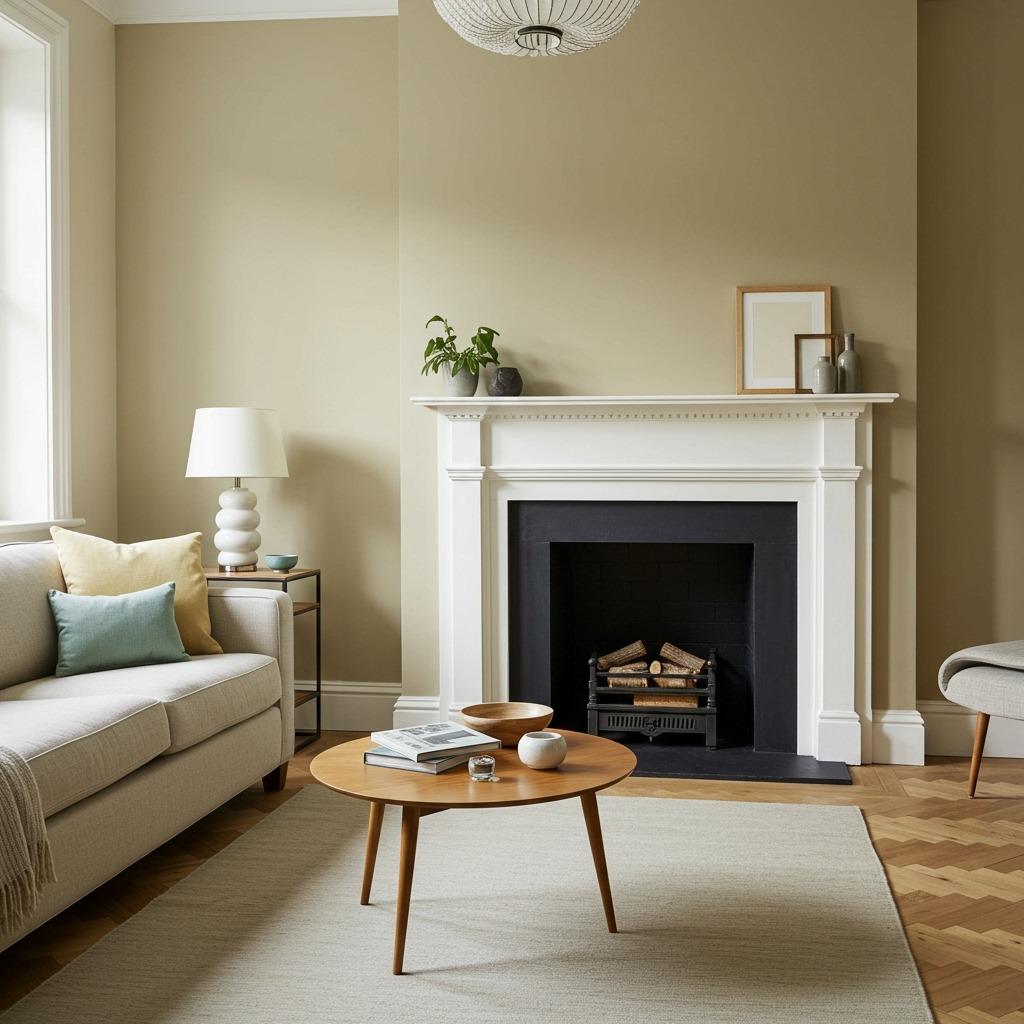
The psychology behind warm colors is fascinating – they literally make us feel more comfortable and relaxed. Cool blues and grays can feel spacious but might leave your snug living room feeling unwelcoming.
Consider painting your ceiling the same color as your walls, just two shades lighter. This technique eliminates harsh lines and makes ceilings appear higher than they actually are.
4. Float Your Furniture Away from Walls
This might feel counterintuitive, but pushing all your furniture against walls actually makes small rooms feel cramped. Floating your sofa even 6-12 inches from the wall creates flow and visual breathing room.
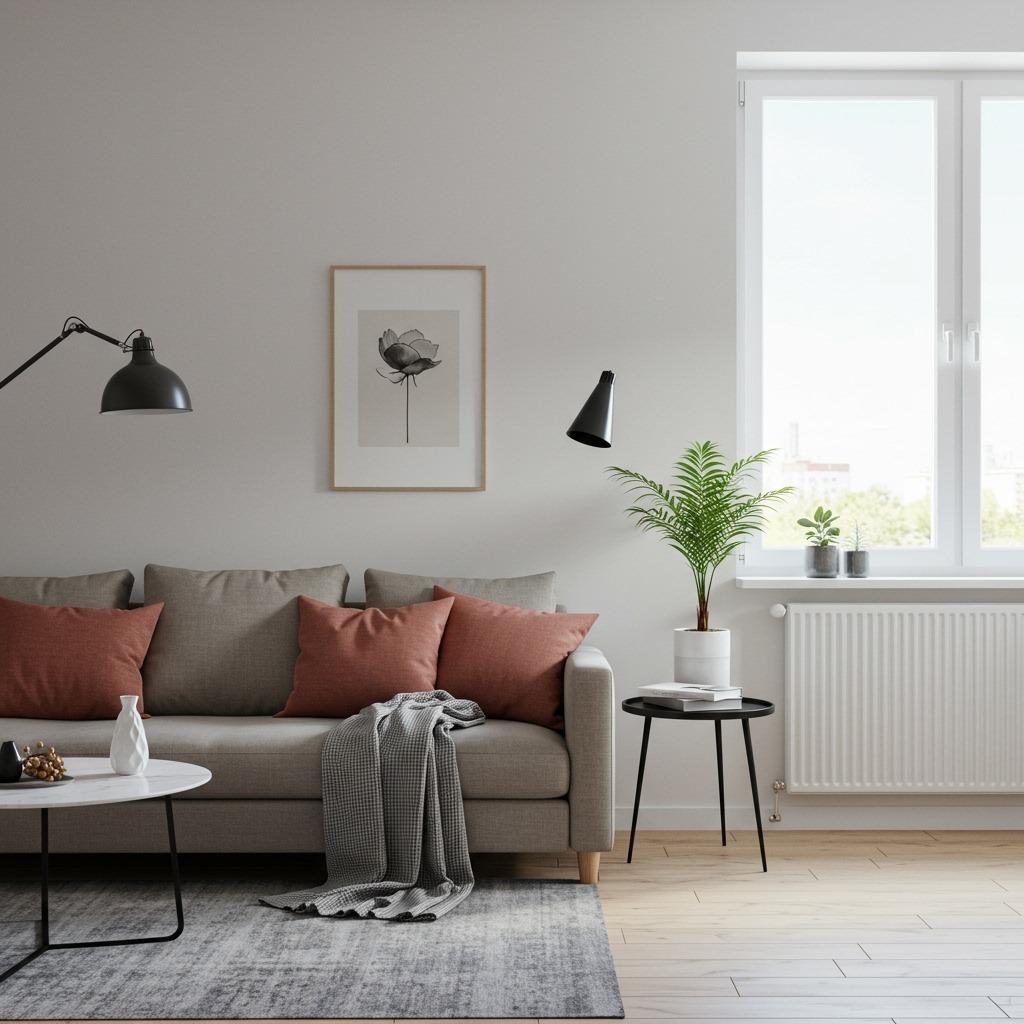
Use the space behind your sofa for a narrow console table or even just leave it empty. That little bit of walkway tricks the eye into perceiving more square footage than you actually have.
This approach works especially well in small space renovation projects where every design decision counts toward creating a more spacious feel.
5. Incorporate Vertical Storage Solutions
Your walls are prime real estate in a compact space. Install floating shelves that reach toward the ceiling to draw the eye upward and maximize storage without eating into your floor space.

Vertical storage serves double duty – it provides practical storage while creating the illusion of height. Books, plants, and decorative objects displayed at varying heights add visual interest without overwhelming your limited square footage.
Think beyond traditional shelving too. Wall-mounted cabinets, hanging planters, and even wall-mounted desks can free up valuable floor space while adding functionality.
6. Use Mirrors Strategically
Mirrors aren’t just decorative – they’re architectural tools in small spaces. Position a large mirror across from your main window to reflect natural light and outdoor views back into your room.

The reflection creates the illusion of additional windows and square footage. It’s like having a second window without the construction costs. Place mirrors at eye level or slightly higher to maximize their space-expanding effect.
Consider mirrored furniture pieces too. A mirrored coffee table or side table reflects light upward and creates visual lightness in your furniture arrangement.
7. Choose a Light-Colored Sofa
Your sofa is likely the largest furniture piece in your living room ideas setup, so its color significantly impacts how spacious your room feels. Light-colored sofas reflect light and visually recede, making your space feel larger.
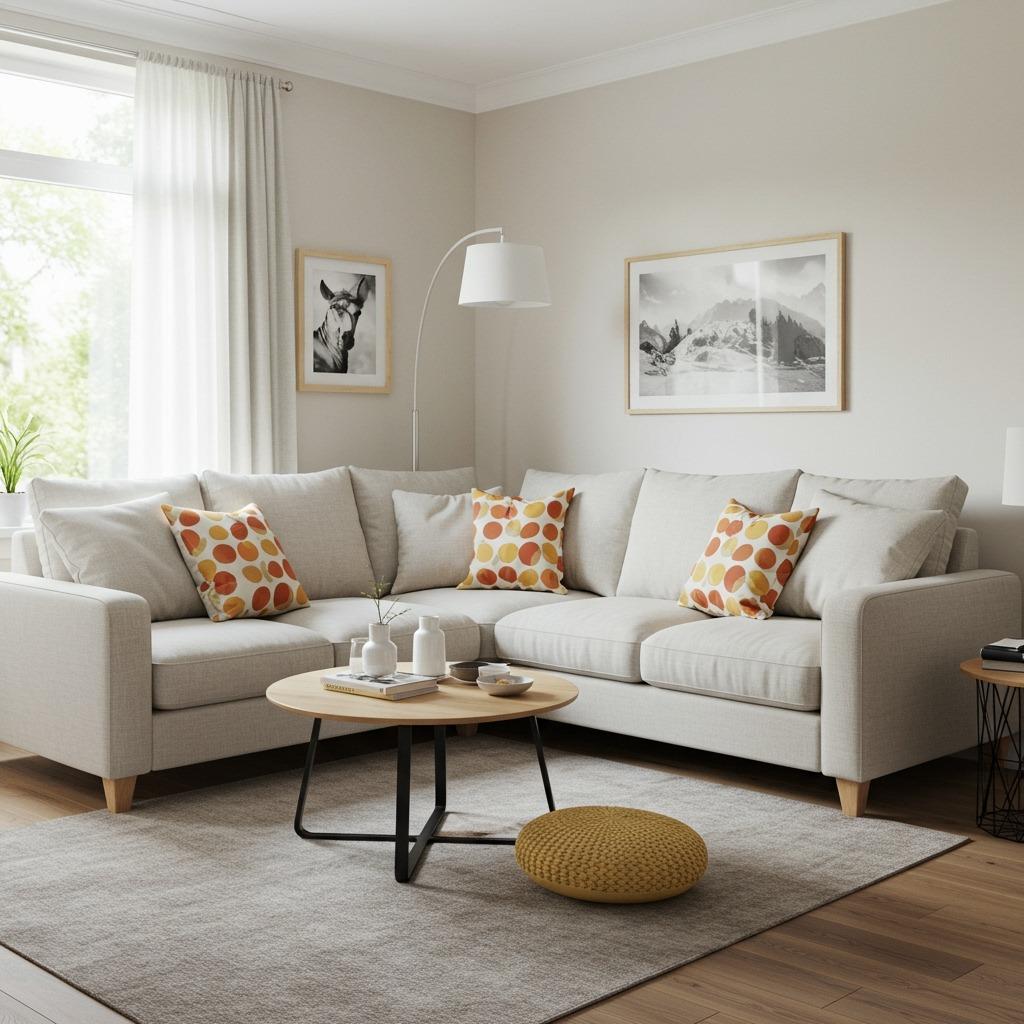
Cream, light gray, or even soft white sofas create a neutral backdrop that allows your personality to shine through accessories and art. You can always add color and pattern through throw pillows and blankets.
Don’t worry about practicality – many light-colored sofas come with removable, washable covers. The space-expanding benefits far outweigh the maintenance concerns.
8. Create Zones with Area Rugs
Area rugs define your seating area and anchor your furniture arrangement, but size matters tremendously in small spaces. Your rug should be large enough for at least the front legs of your sofa and chairs to sit on it.
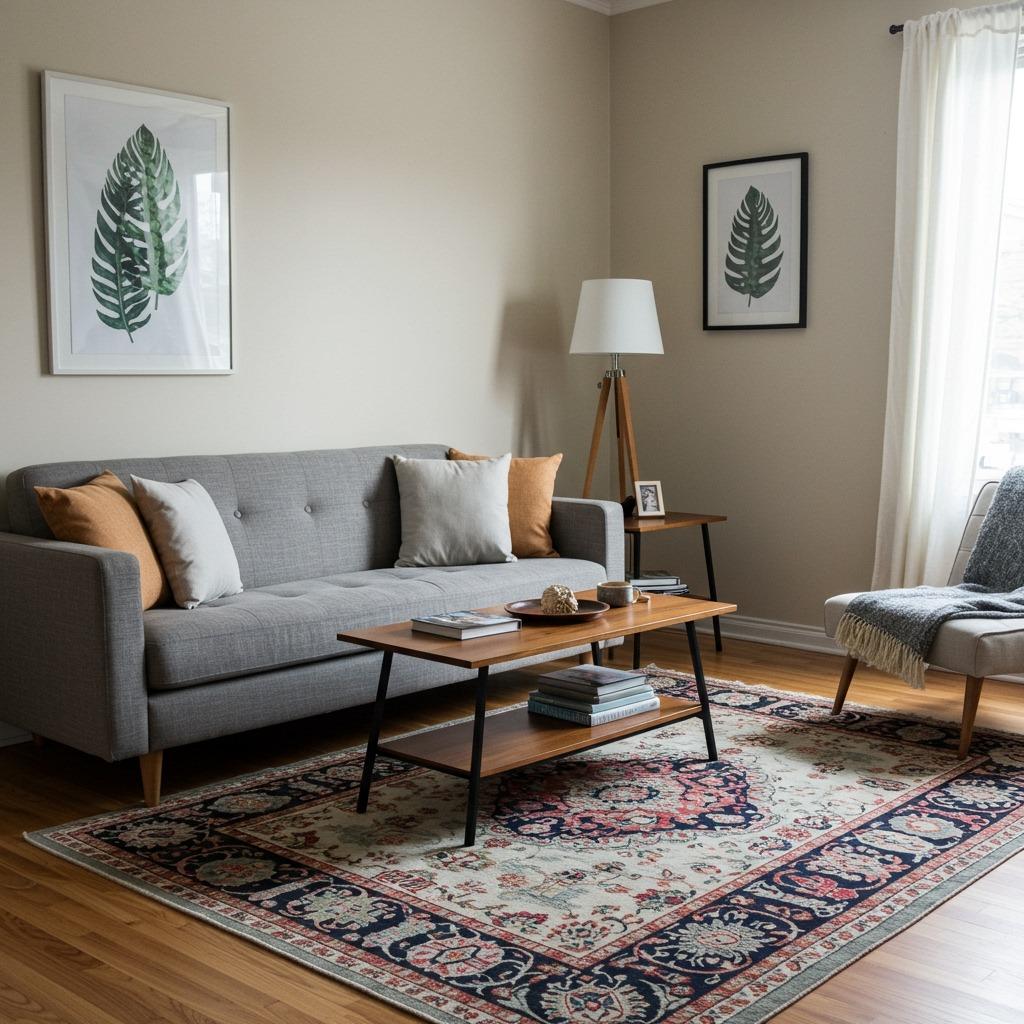
A properly sized rug creates the illusion of a larger floor area. Tiny rugs actually make rooms feel smaller by chopping up the visual flow. Invest in one good-sized rug rather than several small ones.
Light-colored or neutral rugs work best for expanding your space visually, while adding texture and warmth underfoot.
9. Hang Curtains High and Wide
Mount your curtain rods as close to the ceiling as possible and extend them 6-12 inches beyond your window frames on each side. This simple trick makes your windows appear larger and your ceilings higher.
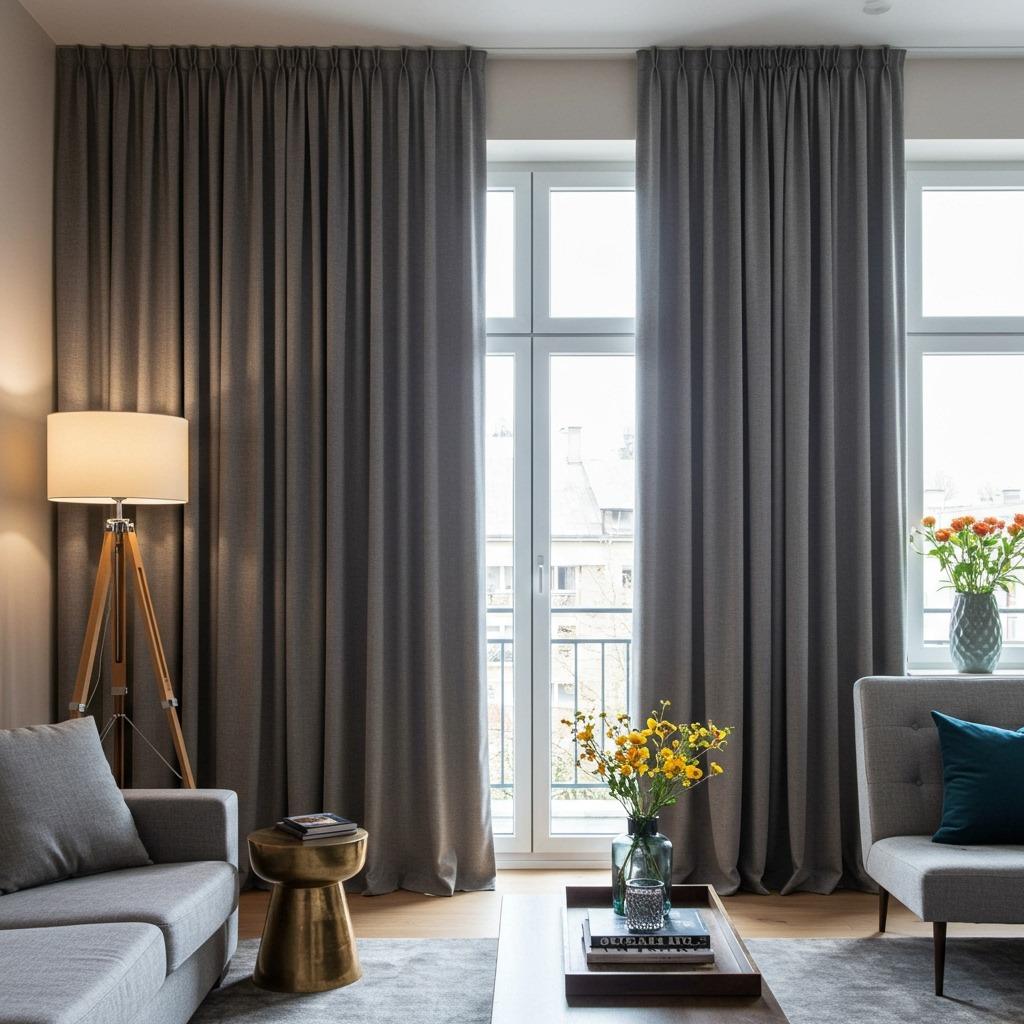
Choose curtains that just touch the floor or have a slight break. Avoid short curtains that hover above the floor – they make ceilings look lower and windows smaller.
Light-colored or sheer curtains maintain privacy while allowing maximum light penetration. Natural light is your best friend in intimate lounge ideas.
10. Incorporate Plants for Natural Warmth
Living plants add life and warmth to your cozy small living room while improving air quality. They also provide natural color variation and organic shapes that soften the hard lines of furniture and architecture.
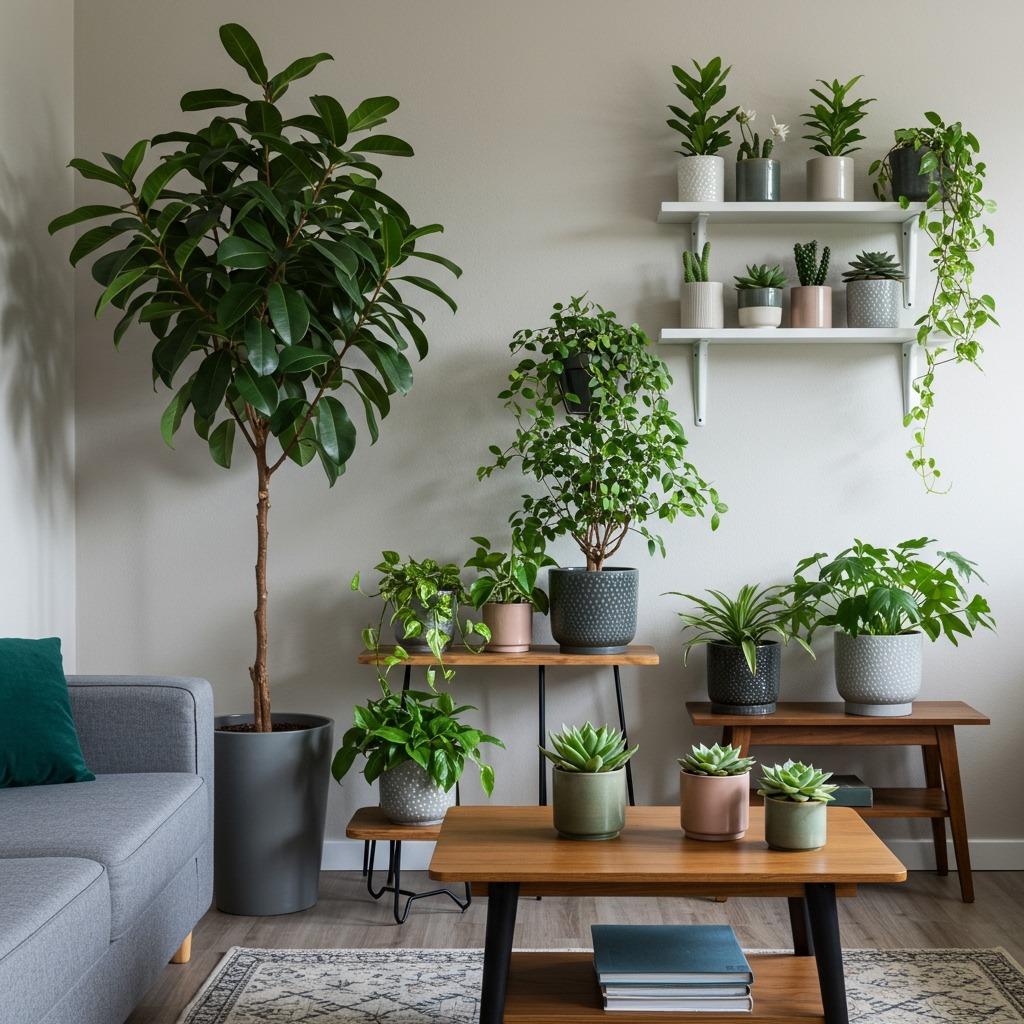
Choose plants of varying heights to create visual layers. A tall floor plant in a corner, medium plants on shelves, and small succulents on surfaces create depth without taking up much floor space.
Plants also connect your indoor space with nature, making even the smallest room feel less confined. According to recent studies by the American Psychological Association, indoor plants can reduce stress and improve mood in small living spaces.
11. Use Transparent Furniture Pieces
Transparent furniture is like having functional pieces that don’t visually compete for space. Acrylic coffee tables, glass side tables, and transparent chairs provide necessary function without blocking sightlines across your room.

These pieces reflect and refract light, adding sparkle and visual interest while maintaining the open feel you’re after. They work particularly well in Scandinavian living room designs where minimalism meets functionality.
The key is balancing transparent pieces with substantial ones. You don’t want your room to feel like it’s floating away, but strategic transparency keeps things feeling spacious.
12. Install Floating Shelves Instead of Bookcases
Traditional bookcases can overwhelm small spaces with their visual weight. Floating shelves provide storage and display space without the bulky framework that makes rooms feel crowded.
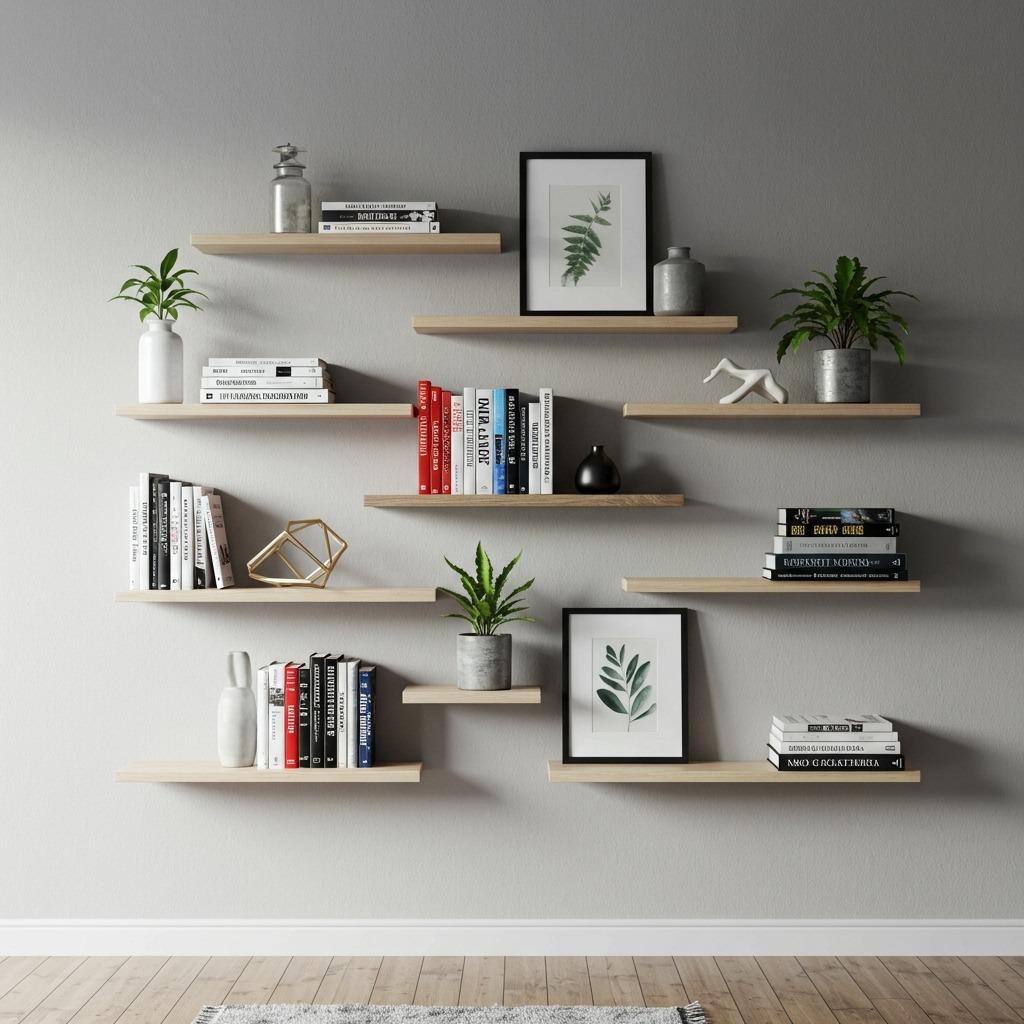
Install shelves at varying heights to create visual interest and accommodate items of different sizes. This approach also allows you to easily rearrange your display as your collection changes.
The wall space between and around floating shelves remains visible, maintaining the sense of openness while providing practical storage for your belongings.
13. Choose Round or Oval Coffee Tables
Sharp corners on furniture can make navigation feel cramped in tight spaces. Round or oval coffee tables improve traffic flow and prevent bruised shins when you’re moving around your seating area.

Curved furniture pieces also feel more organic and less imposing than their rectangular counterparts. They encourage conversation by eliminating the “head of the table” dynamic that rectangular tables can create.
The lack of corners also means you can position round tables closer to seating without compromising comfort, maximizing your usable space.
14. Embrace Built-in Storage Solutions
Built-ins maximize every inch of available space while creating custom storage solutions that perfectly fit your room’s dimensions. They eliminate the gaps and wasted space that freestanding furniture often leaves behind.
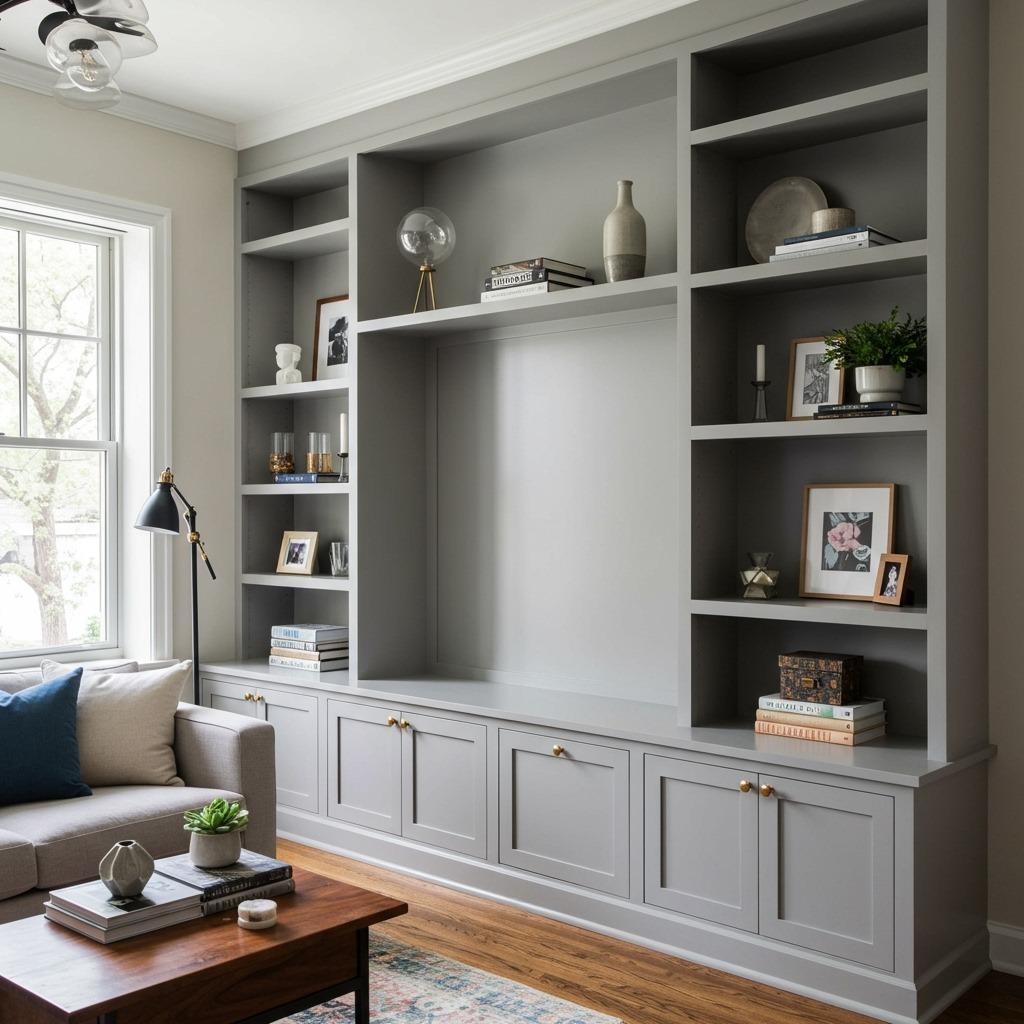
Consider built-in seating with hidden storage underneath, or floor-to-ceiling shelving that houses everything from books to electronics. These solutions provide storage without adding furniture bulk to your floor space.
Built-ins also create architectural interest and can make your small space feel more intentionally designed rather than just furnished with whatever fit.
15. Layer Textures for Visual Interest
Texture adds depth and visual weight without requiring additional square footage. Layer different materials – smooth velvet pillows, chunky knit throws, smooth leather, and natural jute – to create richness and sophistication.
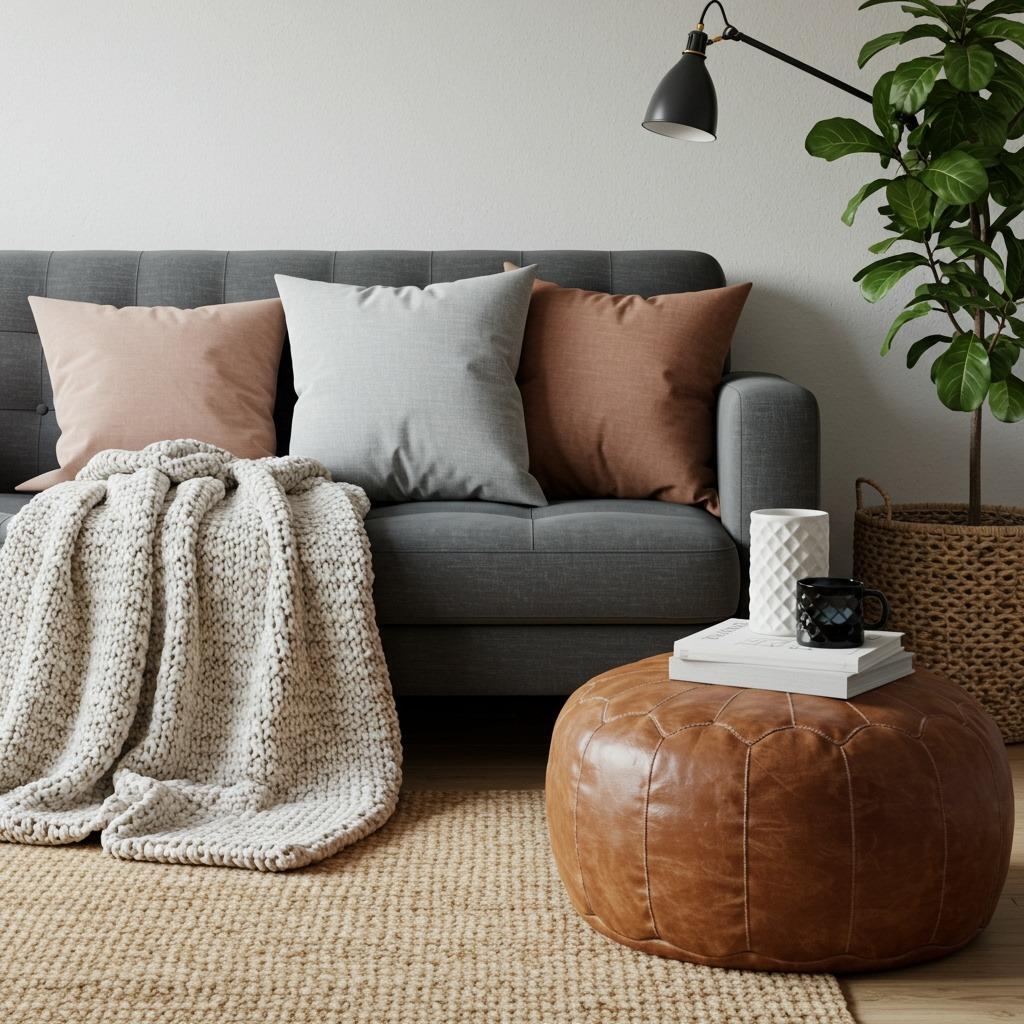
Varying textures catch and reflect light differently, creating subtle shadows and highlights that add dimension to your space. This technique works especially well in monochromatic color schemes where texture provides the visual interest.
The key is balancing rough and smooth, soft and firm textures throughout your seating area to create a space that’s both visually appealing and inviting to touch.
16. Create a Gallery Wall with Personal Art
A thoughtfully arranged gallery wall draws the eye upward and adds personality without taking up any floor space. Mix frame sizes, artwork styles, and even some floating shelves for dimensional interest.
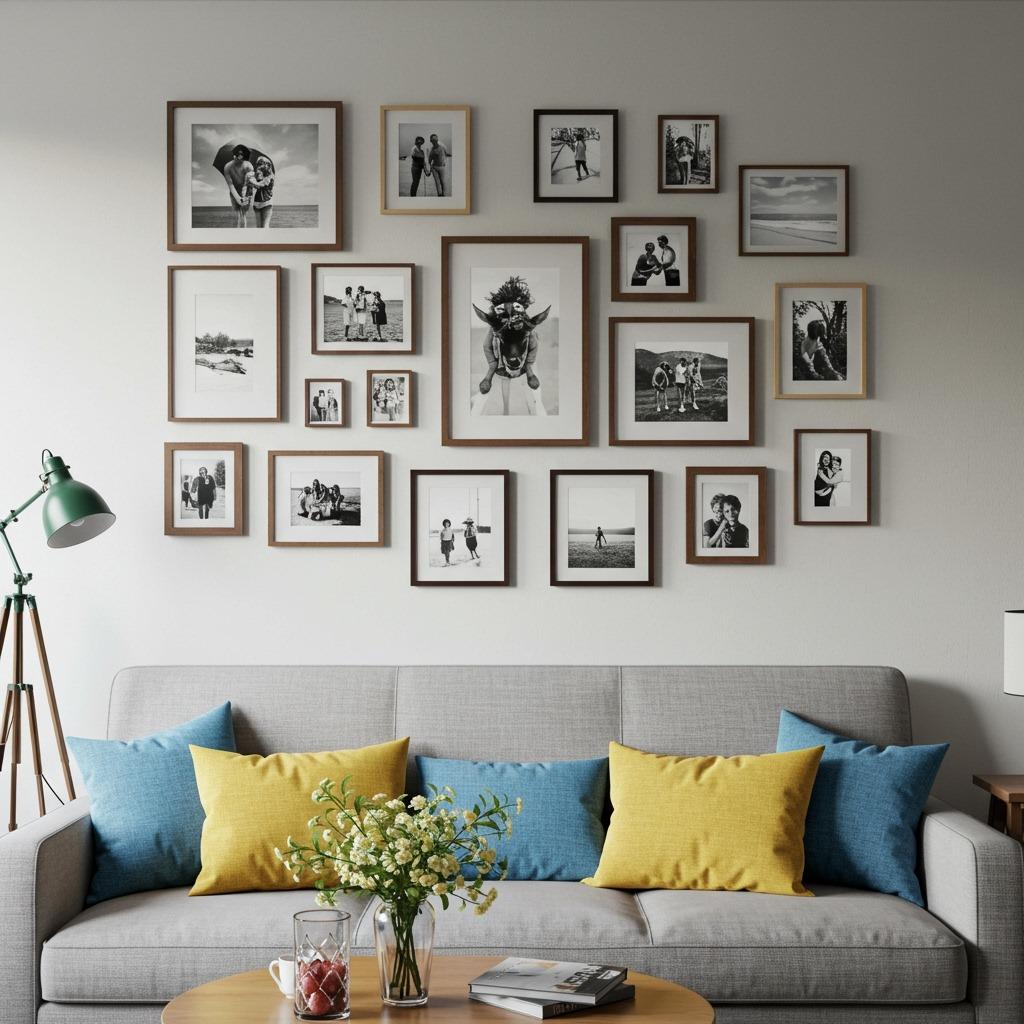
Keep your color palette cohesive to avoid overwhelming your small space. Black and white photos with gold frames, or colorful artwork with consistent frame colors can tie everything together beautifully.
Personal artwork and photos make your space feel uniquely yours, which is essential in creating that cozy, lived-in feeling you’re after.
17. Optimize Your Lighting Temperature
The temperature of your light bulbs significantly impacts how cozy your space feels. Warm white bulbs (2700K-3000K) create the inviting glow that makes spaces feel welcoming and intimate.
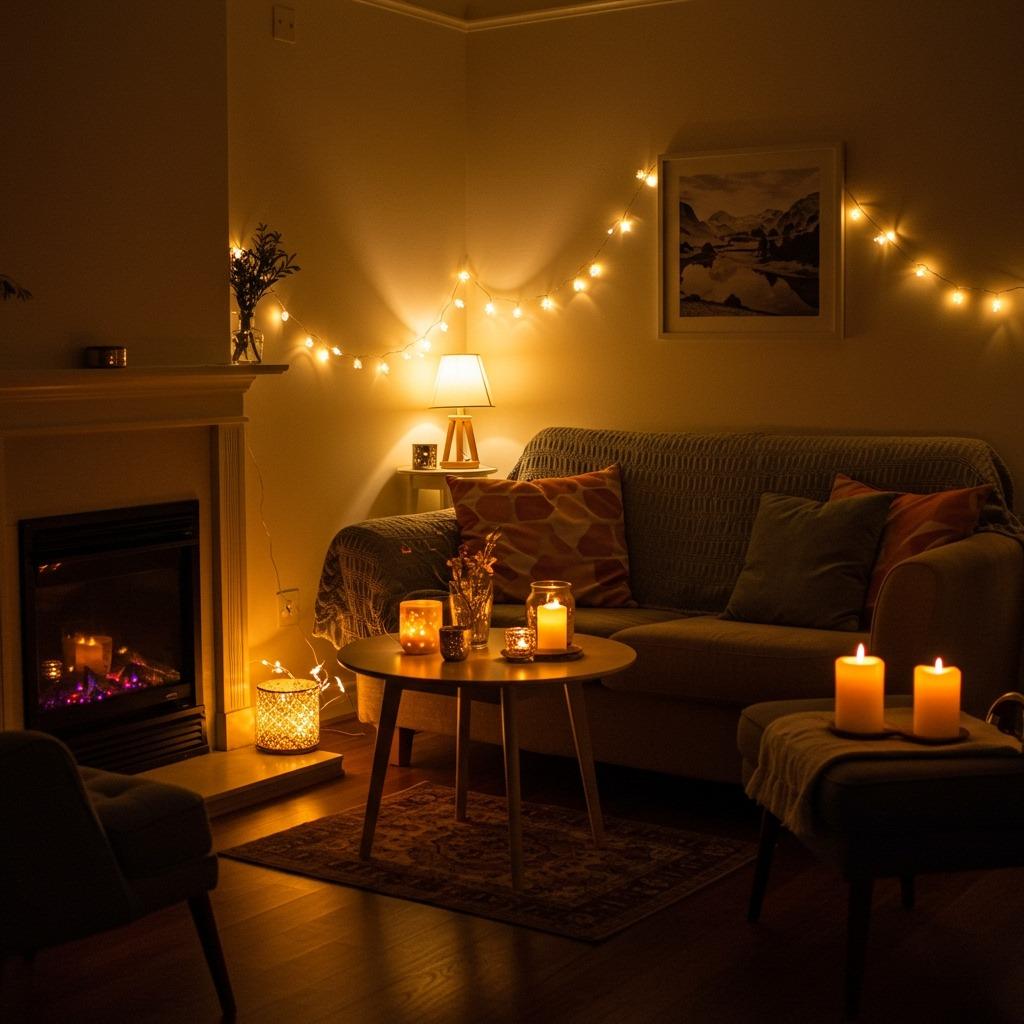
Cool white or daylight bulbs might seem practical, but they can make your snug living room feel clinical rather than cozy. Save the bright white light for task areas and embrace the warm glow for ambient lighting.
Consider smart bulbs that allow you to adjust both brightness and color temperature throughout the day. Cooler light in the morning can help you wake up, while warmer light in the evening promotes relaxation.
Making Your Small Space Work Harder
Creating a cozy small living room isn’t about having less – it’s about making smarter choices with what you include. Every element should serve multiple purposes while contributing to the overall feeling of warmth and welcome you’re trying to achieve.
The most successful small space designs feel intentional rather than compromised. When you apply these designer strategies thoughtfully, your compact living room becomes a showcase of efficiency and style that larger rooms often struggle to match.
Remember that coziness comes from thoughtful details – the right lighting, comfortable seating arrangements, and personal touches that reflect your lifestyle. Your home improvement ideas don’t have to be expensive or dramatic to be transformative.
Start with one or two of these strategies and build from there. Small changes often have the biggest impact in compact spaces, and you’ll be surprised how quickly your room transforms into the cozy retreat you’ve been dreaming of creating.



